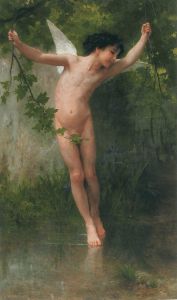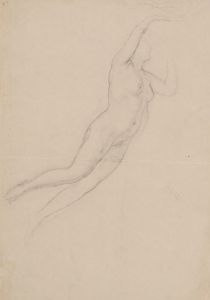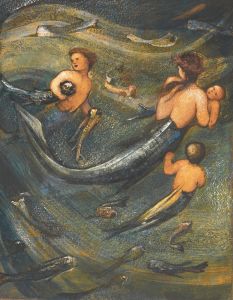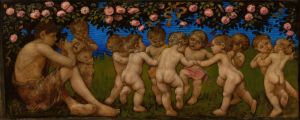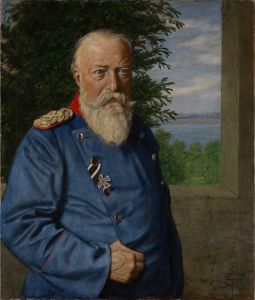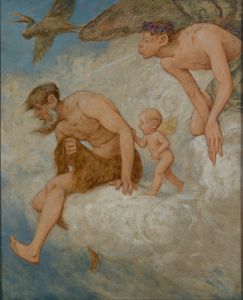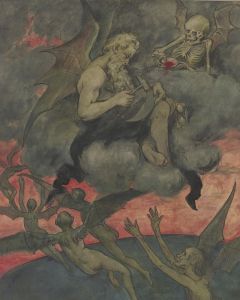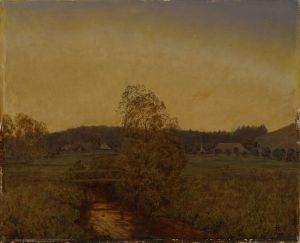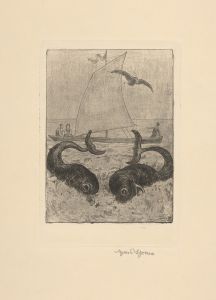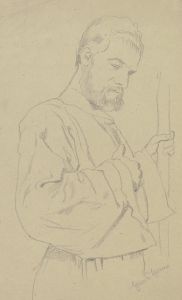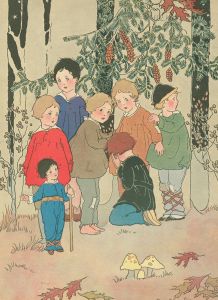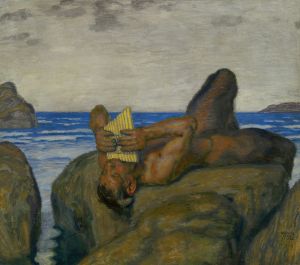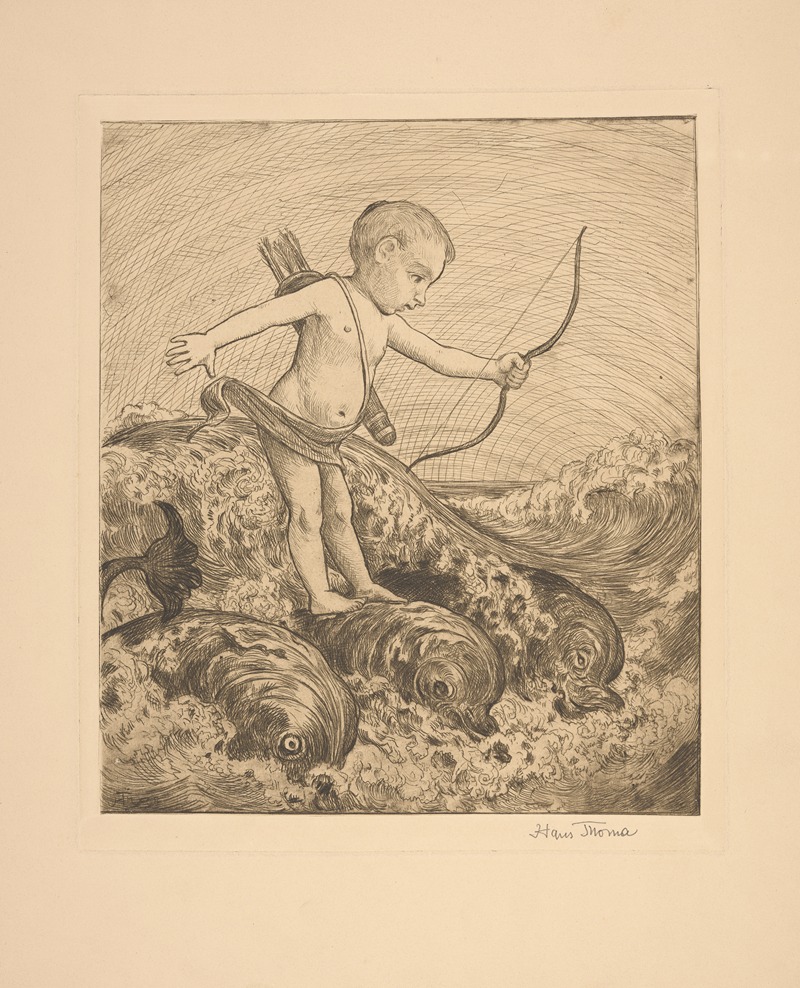
Amor mit drei Delphinen
A hand-painted replica of Hans Thoma’s masterpiece Amor mit drei Delphinen, meticulously crafted by professional artists to capture the true essence of the original. Each piece is created with museum-quality canvas and rare mineral pigments, carefully painted by experienced artists with delicate brushstrokes and rich, layered colors to perfectly recreate the texture of the original artwork. Unlike machine-printed reproductions, this hand-painted version brings the painting to life, infused with the artist’s emotions and skill in every stroke. Whether for personal collection or home decoration, it instantly elevates the artistic atmosphere of any space.
Hans Thoma's painting Amor mit drei Delphinen (translated as Amor with Three Dolphins) is a work by the German painter Hans Thoma (1839–1924), a prominent figure in 19th-century German art. Thoma is known for his landscapes, portraits, and mythological themes, often blending realism with romantic and symbolic elements. However, specific details about the creation, context, or reception of Amor mit drei Delphinen are scarce.
The painting depicts Amor, the Roman god of love (known as Cupid in Roman mythology), accompanied by three dolphins. Dolphins were often associated with love, beauty, and the sea in classical mythology, and their inclusion in the artwork may reflect these symbolic connections. Thoma frequently drew inspiration from mythology and nature, and this piece exemplifies his interest in combining classical themes with his distinctive artistic style.
Hans Thoma's works often reflect his admiration for the German Romantic tradition and his engagement with Renaissance and classical motifs. His art was influenced by his studies at the Karlsruhe Academy of Fine Arts and his exposure to the works of artists such as Albrecht Dürer and the Italian Renaissance masters. Thoma's ability to merge mythological subjects with a serene and idyllic atmosphere is evident in many of his paintings, including Amor mit drei Delphinen.
The painting is believed to have been created during Thoma's mature period, a time when he gained recognition for his unique approach to blending realism with symbolic and allegorical content. While Thoma's works were celebrated in his lifetime, particularly in Germany, his reputation outside his home country remained relatively modest.
As of now, there is limited information available regarding the current location or provenance of Amor mit drei Delphinen. Hans Thoma's legacy, however, is preserved in several museums and collections, including the Hans Thoma Museum in Bernau, Germany, which is dedicated to his life and work.
Due to the lack of detailed records or scholarly analysis specific to Amor mit drei Delphinen, further research would be required to provide a more comprehensive understanding of this artwork.





